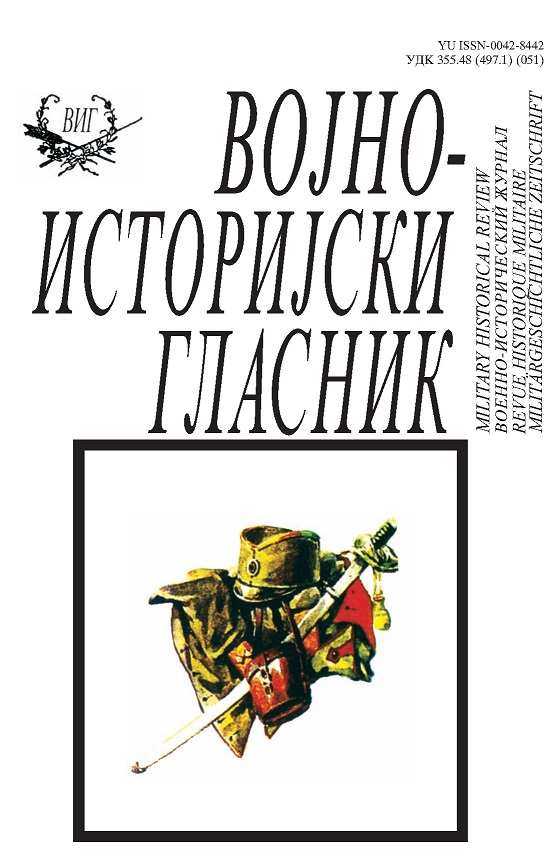Оснивање и дејства Српског ударног корпуса 1944–1945.
Formation and Actions of Serbian Strike Corps 1944–1945
Author(s): Nebojša StambolijaSubject(s): Governance, Military history, Political history, Military policy, WW II and following years (1940 - 1949), Peace and Conflict Studies
Published by: Institut za strategijska istraživanja
Keywords: Second World War; Serbia; Occupation; Serbian State Guard; Serbian Strike Corps; Yugoslav Army in the Homeland; Army Group "E"; Milan Nedić; Borivoje Jonić; Stevan Radovanović;
Summary/Abstract: On the beginning of October 1944, a due to Red Army advancement on the borders of occupied Serbia, Serbian collaborationist government under leadership of general Nedić was resolved by Germans and went to Vienna. Before he left, General Nedić suggested General Borivoje Jonić, commander of Serbian State Guard, to join the ranks of Yugoslav Army in the Homeland. Remaining units of Serbian State Guard gathered in Jagodina in October 6 and there officially entered into the Yugoslav Army in the Homeland as Serbian Strike Corps. After reorganization Serbian Strike Corps went to Kraljevo, where its Second Division was formed. After Kraljevo, Corps was transferred to Raška with a train planning to go to Greece. That plan was changed and Corps joined German forces from Army Group ''E'' that were retreating from Greece. Following Germans, Corps proceeded west in a direction Raška-Novi Pazar-Duga Poljana-Sjenica-Prijepolje and on that way had many battles with partisan forces. From Prijepolje Germans proceeded to Višegrad while Corps and other units of Yugoslav Army in the Homeland went to Pljevlja which was conquered from partisans. After few days of rest Corps moved on and arrived to Čajniče on November 27. In Bosnia Corps was wandering without clear goal going southwest then northwest and approached Sarajevo. In mid-December they were given a command to go north in a plan to conquer Tuzla. In the end of December Corps reached Tuzla and there, in a battle with substantial partisan forces, suffered great losses. Because of many ill and wounded and lack of ammunition commander of the Corps, general Stevan Radovanović, decided to go west and on the January 1, 1945 remains of the Corps entered Zavidovići which was under German control. After negotiations with Germans Corps went north to Slavonski Brod, where it soldiers were disarmed and transported to Vienna with a train. They arrived in Vienna on January 18, 1945. On the end of February 1945, most of Corps' soldiers went from Vienna to Slovenia where other ''national forces'' gathered. On May 1, after final partisan offensive, forces in Slovenia retreated to Italy where they surrendered to ally forces and were sent to POW camps.
Journal: Vojnoistorijski glasnik
- Issue Year: 2014
- Issue No: 2
- Page Range: 70-87
- Page Count: 18
- Language: Serbian

